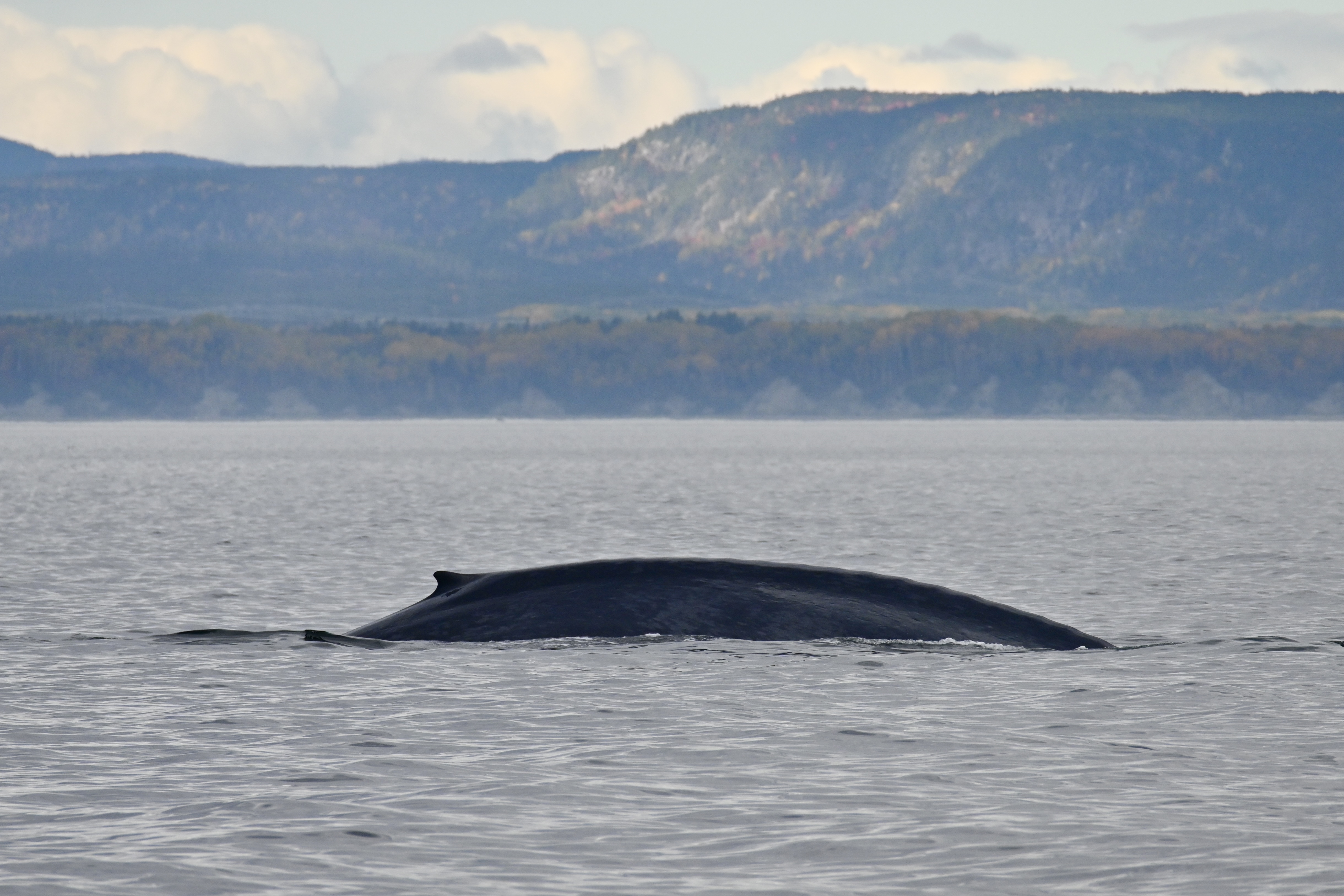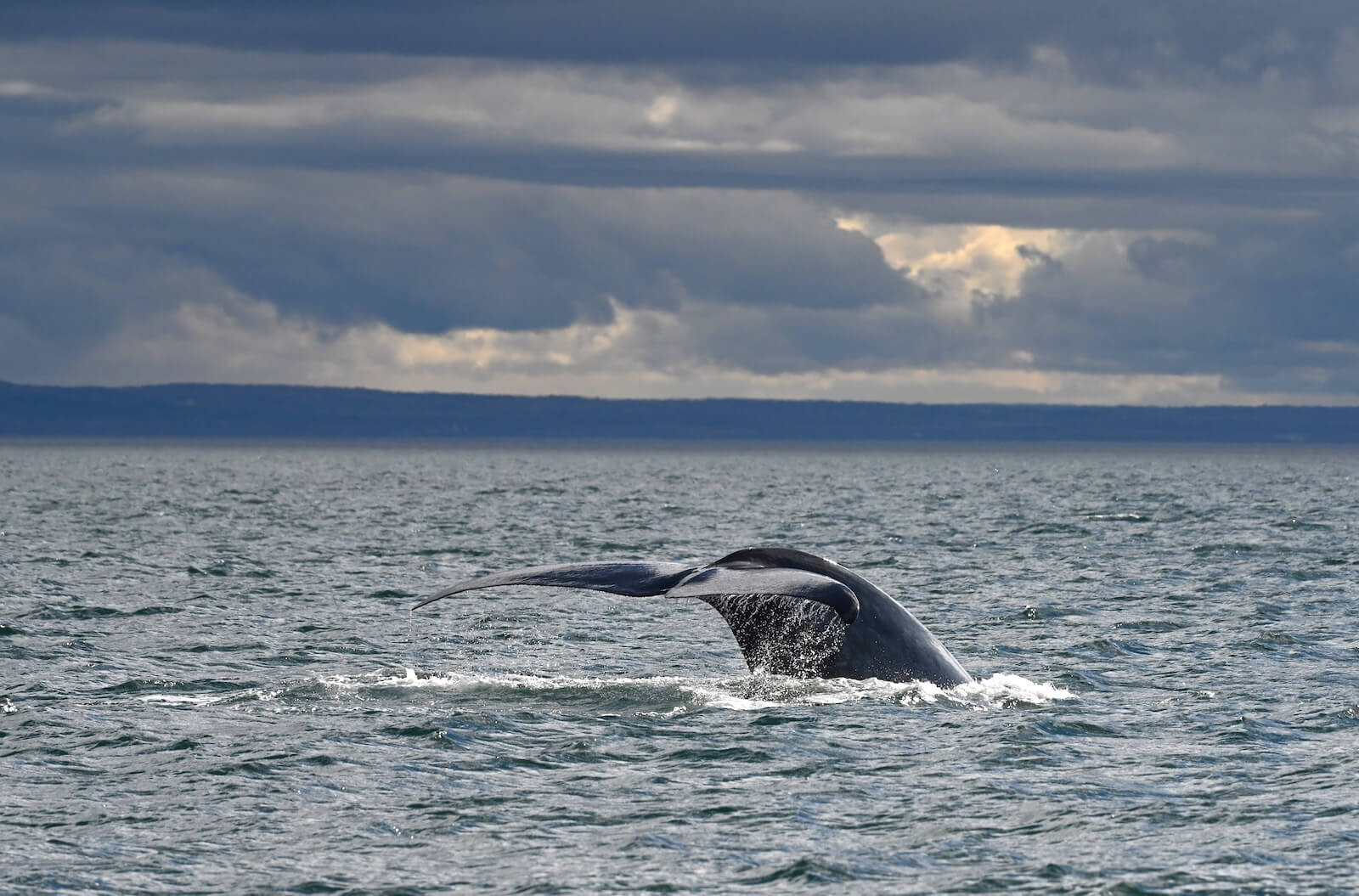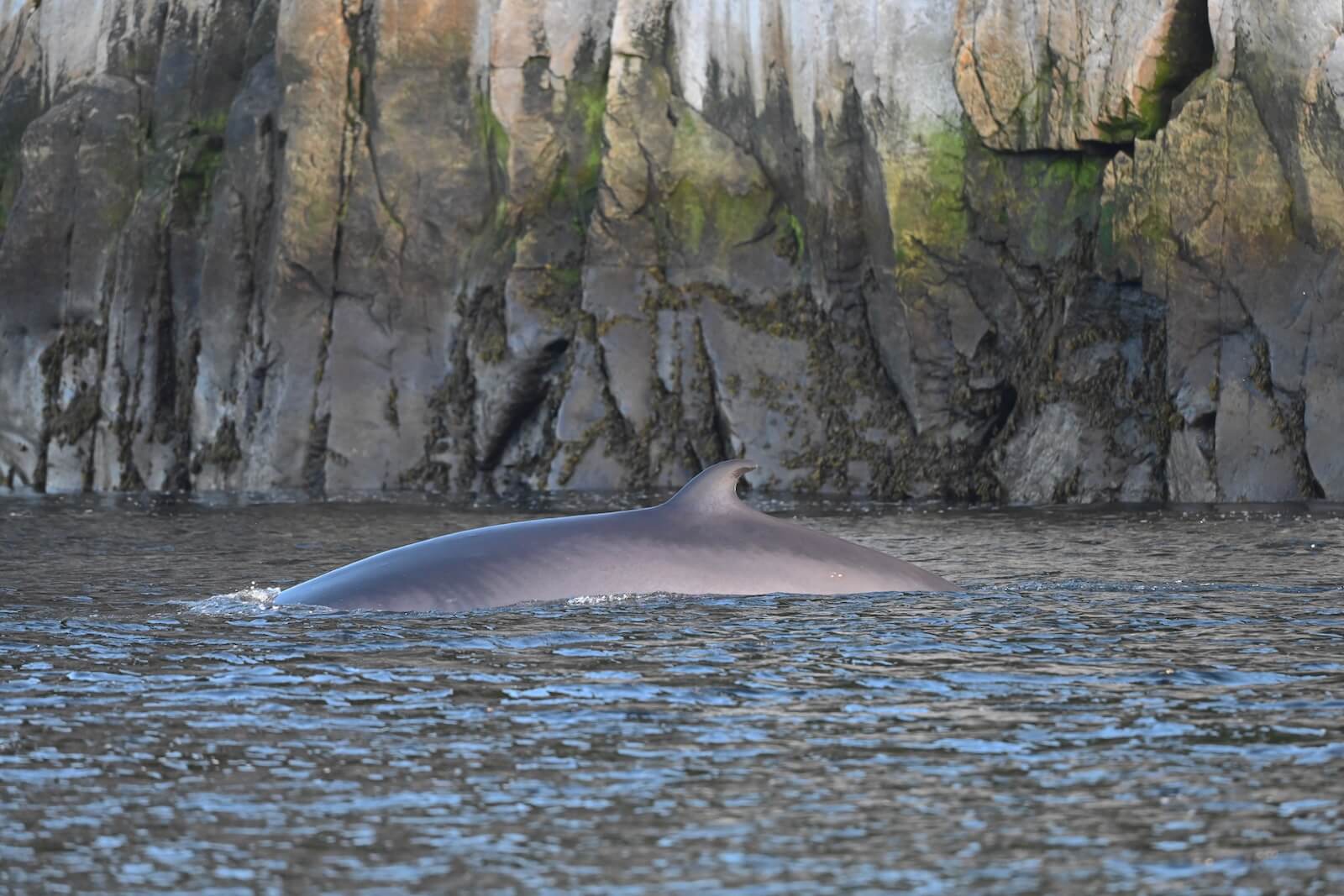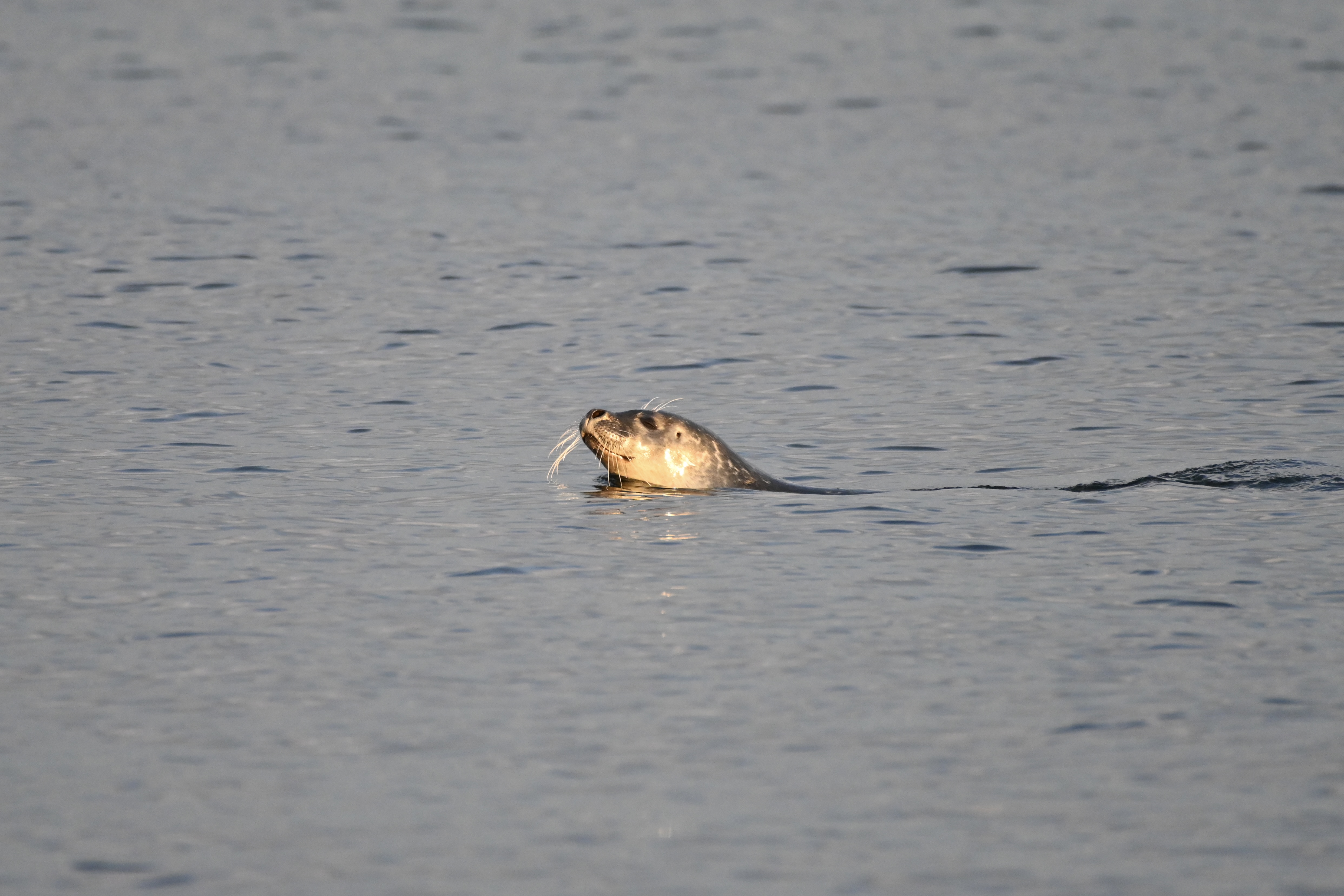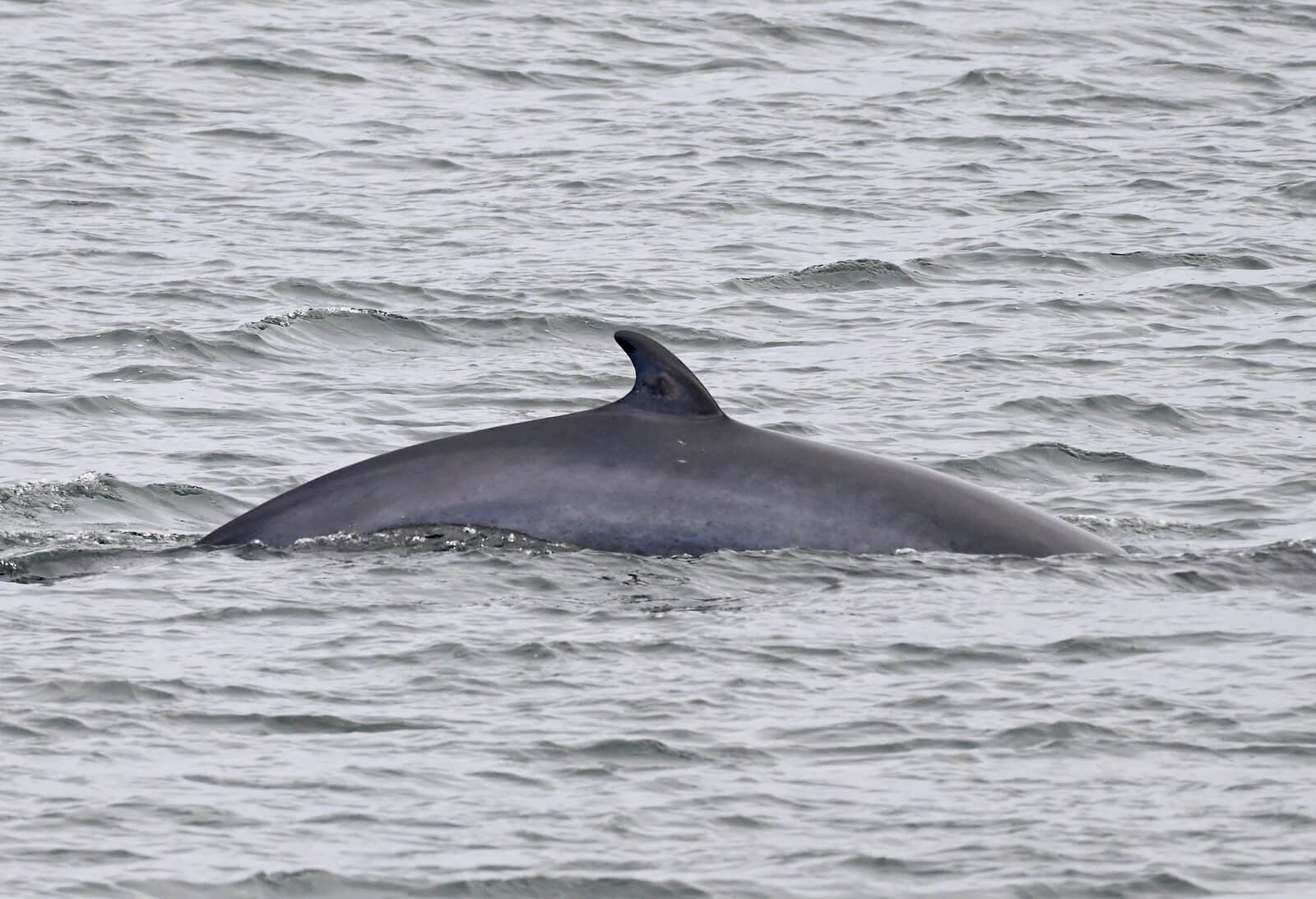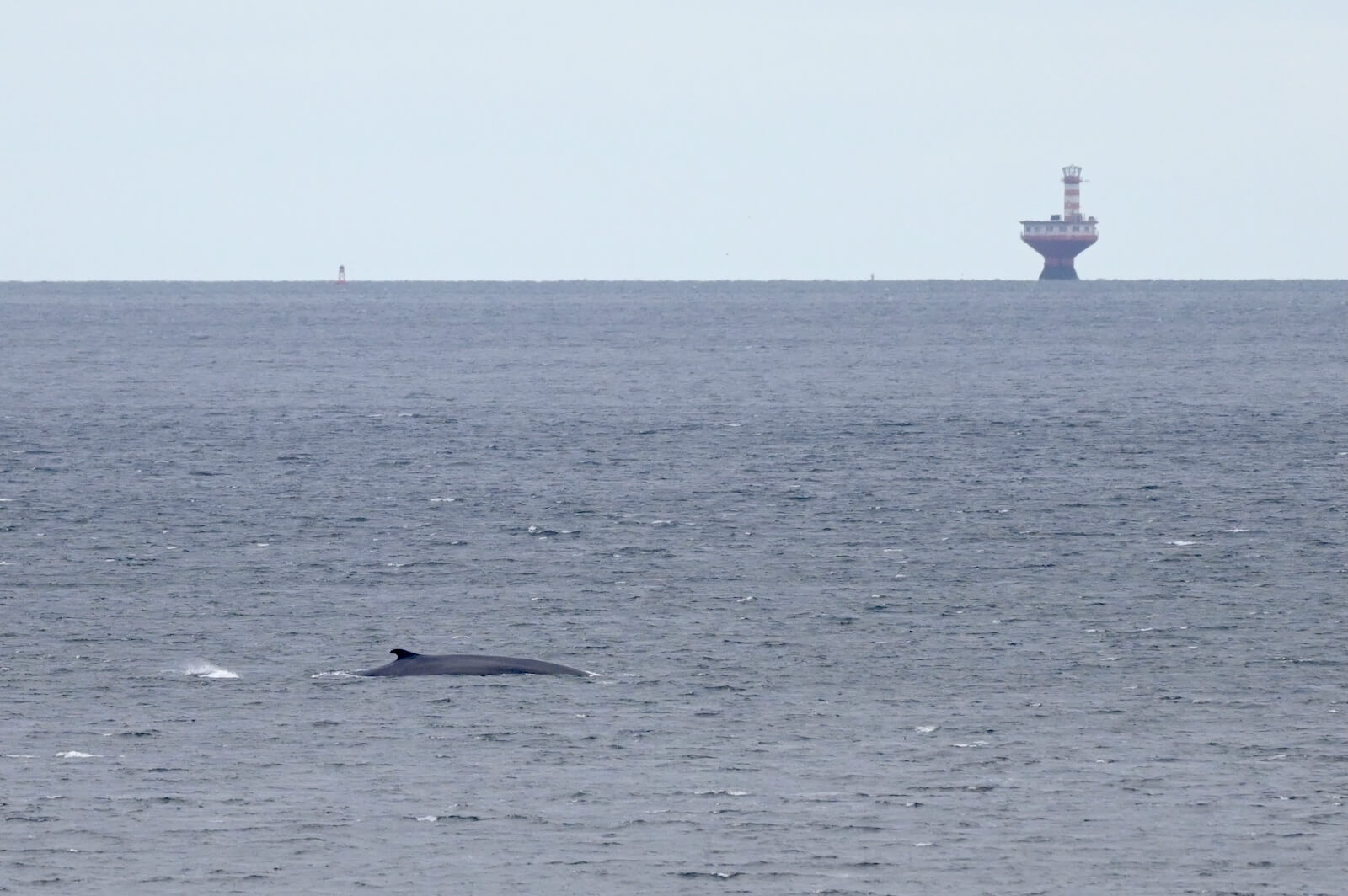Autumn has finally arrived, but the St. Lawrence hasn’t had its last word with the pectoral, caudal, and dorsal fin movements of its marine inhabitants. While the shorelines grow increasingly colourful with each passing day, rorquals, belugas, and seals continue their daily grind below the surface. This week, observers have enjoyed their fair share of sightings: spouts near Percé Rock, humpback whales raising their tails in Gaspé Bay, and spraying foam from feeding blue whales off Longue-Rive.
A sea of sightings
On the Navigating Whale Habitat platform, users reported the presence of six fin whales and several minke whales near Sept-Îles, as well as about twenty humpbacks in the Saint-Augustin sector.
Farther west, in the vicinity of Franquelin and Baie-Comeau, a local resident spotted fin whales blowing offshore. Near Les Bergeronnes, Mériscope’s team recorded several minke whales. In addition to one well-known animal, they even added a new individual to their catalogue. Near Essipit, two harbour seals were warming themselves on the rocks, much to the delight of a visitor to the region who was able to admire them from afar.
In the Gaspé Peninsula, a hiker in Forillon Park was lucky enough to spot two humpbacks lifting their tails in Gaspé Bay, followed by two minke whales on the way back. And we shouldn’t forget to mention the harbour seals that are always faithful to the cove known as Anse aux Cousins. Near Percé, a boater documented three fin whales and a blue whale, as well as a grey seal being attacked by a great white shark.
Giants side by side
Some days remain etched in their memories of whale watchers for ages. For one naturalist, October 4 will certainly be one of them: “We were lucky enough to observe a new humpback whale for the 2025 season. GREMM confirmed its identity as H734, a whale that had not been seen in the region since 2008.” That’s not all, since this animal was together with other giants, “in the middle of a feeding frenzy where blue, fin, and humpback whales were all feeding at the water surface. Even more incredible, we encountered Phoenix the blue whale that day.” All in all, he estimates he saw five blue whales in a single day!
Such jaw-dropping scenes are also a reminder of how much energy and coordination are required by cetaceans to swim. Each species adapts its propulsion to its own needs!
High tide, low tide: Life goes on in the fjord
On October 7, GREMM’s research team went out one last time aboard the Antarès. Offshore, strong winds were a limiting factor, but in the Saguenay, luck was on the crew’s side: “In October, there are fewer and fewer belugas in the Saguenay, so we wondered whether or not we would even see any… Nevertheless, we made two contacts, the first at the mouth and the second near Anse de Roche with a herd of 10 to 15 belugas! When we left them, they were heading toward Baie Sainte-Marguerite with their tail thrusters maxed out. Vroom! Vroom!” To navigate the Saguenay’s currents, belugas alternate between active swimming and letting themselves drift with the current.
Two days earlier, another observer noted several small groups of belugas near Anse de Roche, some heading toward the estuary, others swimming in the opposite direction. On the beach, stranded krill are testimony to the bustling life beneath the surface.
These constant back-and-forth movements remind us that, for cetaceans, swimming is not just a means of locomotion: it is a vital necessity. A blue whale can travel a hundred kilometres or more in a single day, fin whales can reach top speeds of 40 km/h, while a beluga can make numerous dives in succession in search for food. However, we must never forget that each of these fin strokes takes place in a complex environment in which human pressures are mounting. And it’s up to each and every one of us to keep these pressures to a minimum!
Where are the whales this week? Observation map
These data were reported by our network of observers. They give an idea of the presence of whales and in no way represent the actual distribution of whales in the St. Lawrence. Just for fun! Click on the whale or seal icons to discover the species, the number of individuals, additional information or photos of the sighting. To enlarge the map, click on the icon in the top right-hand corner. The map works well on Chrome and Firefox, but not so well on Safari.
To display the list of sightings, click on the icon in the top left-hand corner.
Thanks to all our collaborators!
Special thanks go out to all our observers who share their love for marine mammals with us. Your encounters with cetaceans and pinnipeds are always a pleasure to read and discover.
On the water or from shore, it is your eyes that give life to this column.
- Odélie Brouillette
- Marie-Andrée Charlebois
- Marcel Cousineau
- Laeticia Desbordes
- Hélène Guitton
- Jade-Audrey Lavergne
- Audrey Leblanc
- Marie-Pier Martin
- Pascal Pitre
- Renaud Pintiaux
- Christine Pelletier
- Diane Ostiguy
- René Roy
- Guillaume Savard
- Lise Schink
- Christine Stadelmann
- Claude St-Pierre
- Guy Synnott
And all the others!
Additionally, we would like to acknowledge the following teams that also share their sightings:
Centre d’éducation et de recherche de Sept-Îles (CERSI)
Station de recherche des Îles Mingan (MICS)
Réseau d’observation des mammifères marins (ROMM)
Réseau québécois d’urgence pour les mammifères marins (RQUMM)
Groupe de recherche et d’éducation sur les mammifères marins (GREMM)
Mériscope
Would you also like to share your observations?
Have you seen any marine mammals in the St. Lawrence? Whether it’s a spout offshore or just a couple of seals, drop us a line and send your photos to [email protected]!


